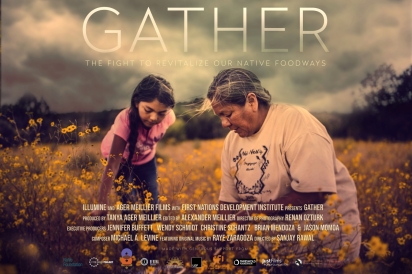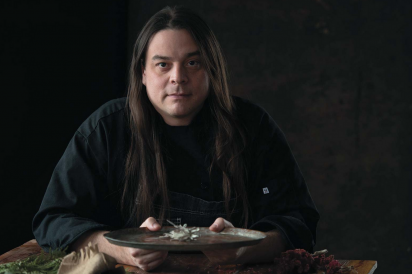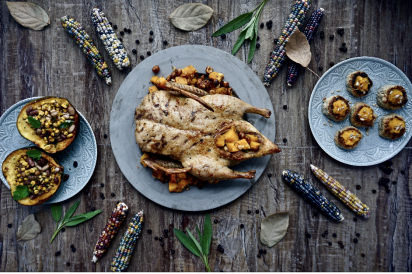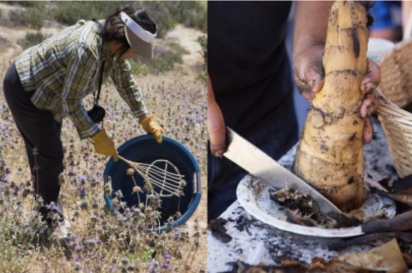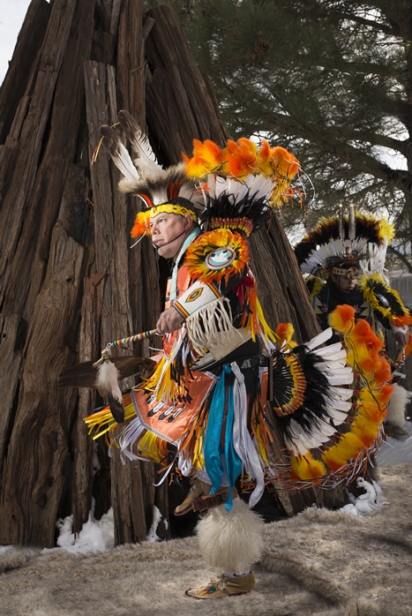Gather and Honor Indigenous People's Day
Hold space for knowledge and understanding of the past, the present and the future of indigenous people.Honor them, embrace them and learn about the history, the food and the world of those who are an important part of our world. We take pause to bring you some resources, stories, recipes and a film from around the country honoring the fight, the justice and the lives of those who are indigenous.
A Must Watch Film
From director, Sanjay Rawal and Executive Producer Jason Momoa comes a deep look into Native American food systems. Did you know 70% of the variety of global cuisine came from the New World? There were no San Marzano tomatoes in Italy until 1770. And no spicy peppers in South East Asia until around that time too. At the same time, much of the wisdom in Indigenous Communities around the world has been destroyed by colonialism, a part of which is the industrialized food system - which seeks to homogenize rather than preserve the amazing diversity of foods. Watch this amazing new film - named a Critic’s Pick by the NY Times. The film is available now on iTunes + Amazon (US/UK/Canada) and Vimeo on Demand (international). Watch the trailer now.
An interview with Chef Sean Sherman, a member of the Oglala Lakota subtribe of the Great Sioux Nation and founder of The Sioux Chef, the Indigenous Food Lab and the nonprofit North American Traditional Indigenous Food Systems (NATIFS), who is on a mission to revitalize Native American cuisine. In the process, his work is re-identifying North American cuisine, reclaiming an important culinary culture long buried and often inaccessible. Find the story from our Fall 2018 issue here.
Edible Indy partnered with Chef Sean Sherman on several indigenous recipes that can easily be made at home. From maple-sage duck to sunflower cookies, these recipes are a way to honor the fall and the indigenous ingredients found in the Midwest. Find the recipes here.
From Edible San Diego, Cooking with Kumeyaay: Preserving Native Foods. San Diego County is “one of the oldest continuously inhabited places on earth,” said Kristie Orosco. Orosco, an ethnobotanist and member of the San Pasqual Band of Mission Indians, works as an independent consultant on sustainable resource management. She also teaches classes and workshops on native plants for the San Diego chapter of the California Native Plant Society, the Kumeyaay-Ipai Interpretive Center, and the San Diego Archaeological Society. Read the story here.
From Edible Denver, Revisiting—and Reimagining—the Cuisine of Our Oldest Cultures - Today, in metro Denver and Colorado Springs alone, there are nearly 50,000 residents who self-identify as Native American. “…as a group of seed savers, farmers, cooks, chefs, restaurateurs… it’s time for us to say, ‘This is what our food is, this is the environment we believe in, and this is the community we share.’” Read the story now.
From Edible Reno Tahoe, Honoring the Medicine Wheel: Restoring native health and traditional foods in the Reno-Tahoe area, including recipes for steelhead trout with freshly harvested pine nuts, roasted quail with wild onions, berry frybread, buffalo or elk backstrap and juniper tea. “We are emphasizing the sacred lifestyle of the Great Basin tribes and educating others on how these tribes survived in this area for thousands of years. Also, it’s not just about food; it’s a big cycle of fasting and prayer, gathering the foods and protection of the animals and plants for future use.”
From Edible Ojai & Ventura County - Beyond having the knowledge, there was interaction. As we recognized the Plants and Animals in our land, we hoped that they would recognize us too. We gave them gifts, sang to them their very own song; we gently harvested them, prepared them and consumed them. At the right time of the year we honored them in Ceremony. For the Chumash, that fall Ceremony is called the Hutash Festival. Hutash means Mother Earth. Read the full story here.
Additional Stories To Consider Reading
From Edible Monterey Bay, Native Traditions: Learning to live in harmony with nature
From Edible Alaska, Tlingit Potatoes
From the Gather Film, stories of the people in the film and their missions
Resources of the Native Food System



